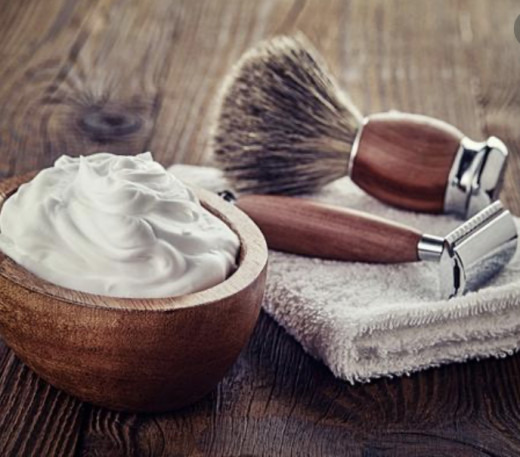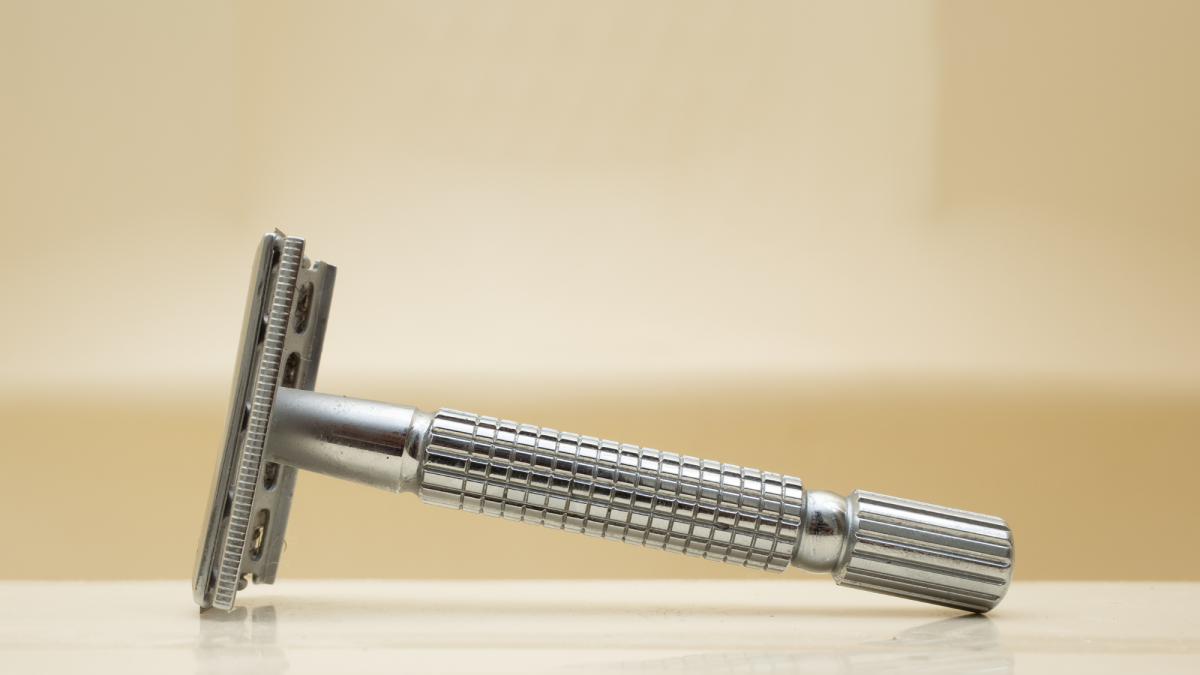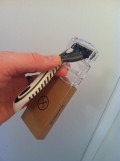Plastic Free Shaving
Soap, metal safety razor, blade & brush: It won't just save the world a little more

Let's go back to traditional soaps and minimise on waste
During the 19th century it is unclear if women shaved their legs though it is probably unlikely it was popular unless they were artist models or courtesans to a greater or lesser extent. This is partly because commercially available shaving equipment was either not available and the tools were not mass marketed. These tools not only include blades, but also oils and shaving soaps.
Arguably, the Romans probably had a more advanced shaving culture using oils, blades and of course slaves to shave you, especially if you were rich. Roman portraits make it abundantly clear that men did shave – consider Caesar and his successors and their busts, from Octavian and Caligula all the way to Emperor Constantine, though there were some Roman Emperors who wore beards. Women tended to have dresses to cover their legs throughout history and the propensity to shave legs in women probably only became really common in the 20th century, thanks to mass marketing of shaving equipment and reduced skirt lengths that revealed their legs more than ever before.
Shaving was more of a problem in the past though it was common among the rich. Most men in history and the ancient world had beards – this includes Greek heroes such as Odysseus and most kings from the European Middle Ages. Shaving was an aspect of well to do societies as with the Romans, Priestly or religious classes such as Buddhist monks, Catholic monks and clergymen and other regal lineages that influenced fashion such as the French Bourbon dynasty starting with Louis 14th. The executed French monarch, Louis 16th happened to be clean shaven too. In the UK, fashions mirrored French ones but Victorian men were relatively hirsute. In the early 20th C and beyond, shaved appearances became normative, driven by mass marketing by companies like Gillette and the invention of the safety razor.
Before safety razors, most shaving was often done using a large shaving knife, that could often be folded into a handle for safety and portability. The blade was regularly sharpened using a rough piece of leather and the knife was kept dry and oiled to prevent it rusting – stainless steel only became common after the 1850s, especially as a mass marketed commodity. The handles of shaving knives were made of wood or ivory among other materials to make them personal and attractive. It’s an interesting question to speculate how bronze age cultures such as the Incas and Aztecs (before being destroyed by the Spanish) shaved given they didn’t have iron, but only gold, silver, obsidian and perhaps some commoner native metals to work with. Considering shaven Native Americans, they probably had a developed shaving culture at some level.
Given human labour was much cheaper in the past, slaves and servants as well as shaving boutiques would have offered those who could afford them, shaving services. Indeed, one of the greatest pleasures when I’m on holiday is getting shaved professionally by barbers, something I couldn’t afford where I actually live. Barbers were an important guild of hygienic craftsmen and women who catered for those who could afford them, from kings and queens to the middle classes, throughout history.
The mass marketed safety razor took off around 1900 though primitive versions did exist from 1700. Here’s what Wikipedia has to say (2020):
Protective devices for razors have existed since at least the 1700s: a circa 1762 invention by French cutler Jean-Jacques Perret added a protective guard to a regular straight razor.[1 The first known occurrence of the term "safety razor" is found in a patent from 1880 for a razor in the basic contemporary configuration with a handle in which a removable blade is placed (although this form predated the patent).[2][3]
Safety razors were popularized in the 1900s by King Camp Gillette's invention, the double-edge safety razor. While other safety razors of the time used blades that required stropping before use and after a time had to be honed by a cutler, Gillette's razor used a disposable blade with two sharpened edges. Gillette's invention became the predominant style of razor during and after the First World War, when the U.S. Army began issuing Gillette shaving kits to its servicemen.
From 1900, mass production and mass marketing of the safety razor led to a revolution in shaving. Until well into the 1970s, these razors for men and women were made of metal until plastic started replacing the handle and cap, leaving just a metal blade in modern ones.
This is now something of a disaster for the environment with the accumulation of indestructible piles of plastic in land and sea and the fact that we are now accumulating plastic in our own bodies thanks to sea food and packaging. It’s not just razors that are contaminated with plastic. Shaving creams are placed in complicated plastic containers or metal ones incorporating compressed gases such as butane, that exacerbate the greenhouse effect. Before such compressed gasses, there were HFCs and similar gasses that destroyed the ozone layer. Modern shaving is way too disposable and expensive, think of all those chemicals and the newest style of safety razors that you are expected to buy and find refills for. The companies are very good at upgrading in such a way that, pretty soon, you need a new disposable razor & a set of matching, expensive cartridges. We must learn to row back from using plastic, harmful chemicals and consider if this makes life any harder. The answer is no – it saves a lot of money too.
It’s only recently I went back to an all metal safety razor, some shaving soap in a small basin and a shaving brush (the use of electric razors is another subject) and scissors for occasional support. Just four, basic elements and a plentiful supply of replacement razor blades. The old fashioned blades with an edge on either side were really cheap in card packaging. The quality shaving soap was somewhat expensive, but a single bar can last over one year and counting. The badger hair or equivalent shaving brush is made of renewable material such as wood and animal hair – or can be. I’m now shaving like my grandfather, though not every day, every other day. I also use scissors to help trim the nostril area. I expect there are similar set ups that ladies can use.
I’ve never been happier with my environmentally friendly, old fashioned shave, the way my grandfathers did things. No more wasting time, wondering in the supermarket to find over-branded shaving creams with their wasteful packaging or searching for disposable razors or razor cartridges. It all gets delivered to my door and screw those companies trying to milk me financially for their environmentally unfriendly shaving products.
Good shaving soap may be made in a very traditional way using the oils from sheep wool such as lanolin and build up a rich lather with little trouble. A single bar of 150-200 grams is rather dense, circular and can last for months if not years. You can keep it in a circular tub (there are also travel versions). The shaving brush will need replacement when it’s denuded of its fur, but that’s easy enough. The only problem is that I’ve been stopped at airports and told to abstract razors from my toilet bags. Since there were plenty more in packets, this was no problem. Traditional safety razor brands like Wilkinson’s Sword still exist.
Many companies now promote traditional shaving products, but they don’t highlight the environmental and cost saving benefits and many others as stated here1. If it’s good for you, good for the planet and good for your wallet and saves an awful amount of shopping time, why not? Maybe you could be persuaded rather than being the victim of the pestering of rapacious shaving companies that want to sell you a disposable culture and trash your health and sanity and that of the planet at the same time.
1. https://www.gentjon.com/blogs/news/why-should-you-switch-to-traditional-shaving
The ancients from Roman emperors to Buddhist monks all shaved, but they had barbers to help









